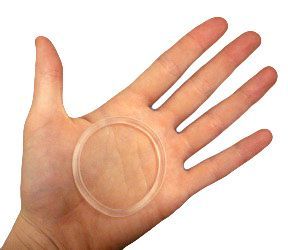New Intravaginal Ring To Provide HIV And Pregnancy Prevention: Dual Protection Device Is First Of Its Kind

Women who partake in vaginal sex may soon be able to protect themselves from both unintended pregnancies and the human immunodeficiency virus (HIV) with the use of a new kind of intravaginal ring.
Presented at the 2013 annual meeting of the American Association of Pharmaceutical Scientists (AAPS) — the world’s largest pharmaceutical sciences meeting — is the first dual-intravaginal ring (IVR). The IVR was developed for a 90-day co-delivery of tenofovir and levonorgestrel, an anti-HIV drug and a contraceptive.
The World Health Organization (WHO) says there are 35.3 million people living with HIV around the world. A person can become infected with the virus through the spread of body fluids. The disease affects specific cells of the immune system, known as CD4 cells or T cells. HIV compromises the body’s immune system and its ability to fight off infections and disease by destroying T cells, which can lead to acquired immune deficiency syndrome (AIDS) if left untreated, according to the Centers for Disease Control and Prevention. Although new cases are reported throughout all regions of the world, 95 percent of new infections occur in patients who live in low- and middle-income countries, particularly in sub-Saharan Africa.
Similarly, proportions of unintended pregnancies are substantially higher in South America and southern Africa, where there tends to be a lack of adequate resources for pregnancy prevention. Approximately 87 million unintended pregnancies occur each year, says WHO.
Researchers who developed the ring noticed that the majority of the world’s unplanned pregnancies occur in regions where there is a high prevalence of HIV rates. "We saw the urgent need to make this dual-protection intravaginal ring because a majority of the world's unintended pregnancies occur within resource-poor regions where the HIV/AIDS pandemic is most prevalent, such as sub-Saharan Africa,” Meredith Clark, Ph.D., of CONRAD, a reproductive health research organization, said in a statement.
In an effort to prevent long-term HIV and pregnancy, researchers Dr. Clark and David Friend, Ph.D., in collaboration with the University of Utah created the IVR using dual-protection, or multipurpose prevention technology (MPT), to simultaneously protect women from the sexual transmission of HIV and unplanned pregnancies during vaginal sex. MPTs are considered a relatively new reproductive health technology that will have support from medical experts and be particularly useful in developing countries.
The device was designed by the team of researchers using reservoir-type polyurethane segments that were individually optimized to deliver each drug at the desired dosage, according to Medical Xpress. There will be a high flux of tenofovir and a low flux of levonorgestrel. Currently, tenofovir is the only topical prophylactic that is effective in a gel form at reducing the sexual transmission of HIV.
To test the effects of the ring, researchers performed in vitro release testing, and three-month pharmacokinetic (PK) studies in rabbits and sheep which were compared against the tenofovir gel. The PK studies revealed levels of tenofovir delivered from the IVR were similar or higher than levels seen with gel application of the anti-HIV drug. Also, the release of levonorgestrel from the IVF was found to be consistent.
At the 2012 AAPS Annual Meeting, A team of investigators led by Patrick Kiser, who is now at Northwestern University, presented research on an anti-HIV-only IVR that was developed in partnership with CONRAD. The 90-day IVR was developed for the delivery of tenofovir as a means to reduce the sexual transmission of HIV. The IVR tenofovir was tested in sheep and showed similar or higher levels of a short-lasting tenofovir vaginal gel that was proven to be clinically effective at reducing the risk of HIV infection in women.
CONRAD’S Product Development group and collaborators are currently performing studies but hope to begin phase 1 clinical trials in women early next year in order to compare the combination anti-HIV and contraceptive IVR to the anti-HIV IVR.
“We anticipate a lot of excitement for this product, as it is the first dual-protection ring to be evaluated clinically,” said Dr. Clark.
While there is no vaccine to protect against HIV and no cure for AIDS, there are still ways to preventative measures individuals can take to prevent the virus. The Mayo Clinic advises those who engage in sexual intercourse to use a new condom every time during anal or vaginal sex.
For more information on HIV prevention, click here.
Published by Medicaldaily.com



























